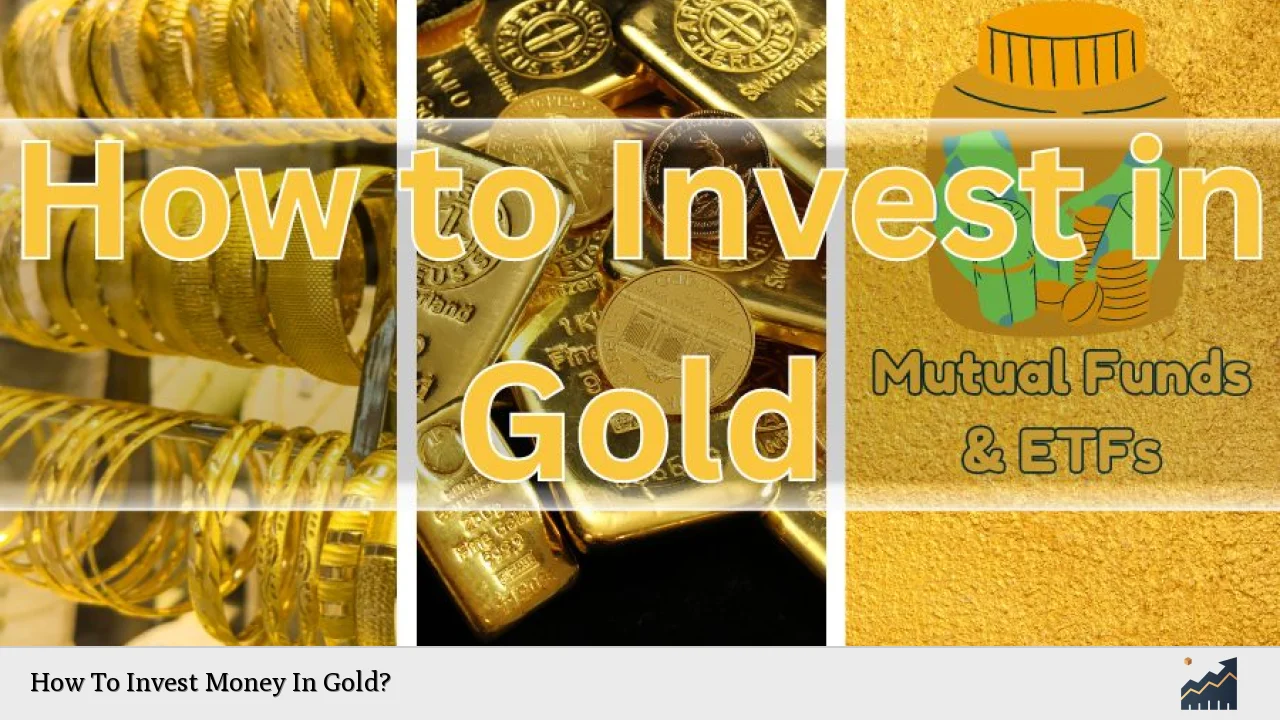Investing in gold has long been a favored strategy among individuals looking to diversify their portfolios and protect their wealth against economic uncertainties. Gold is often seen as a safe-haven asset, meaning it tends to retain its value during times of market volatility. This makes it an attractive option for investors who want to hedge against inflation and currency fluctuations. In this article, we will explore various methods for investing in gold, the advantages and disadvantages of each approach, and practical steps to get started.
Investing in gold can be accomplished through several avenues, including purchasing physical gold, investing in gold exchange-traded funds (ETFs), buying shares of gold mining companies, and trading gold futures. Each method has its unique characteristics and risks, making it essential for investors to understand their options before committing funds.
| Investment Method | Description |
|---|---|
| Physical Gold | Tangible assets such as coins or bars. |
| Gold ETFs | Funds that track the price of gold. |
| Gold Mining Stocks | Shares in companies that mine gold. |
| Gold Futures | Contracts to buy or sell gold at a future date. |
Understanding Gold as an Investment
Gold has been used as a form of currency and a store of value for thousands of years. Its intrinsic value stems from its rarity, durability, and the high demand for it in various industries, including jewelry and electronics. Investors often turn to gold during times of economic uncertainty or inflation because it tends to maintain its purchasing power when fiat currencies decline.
Investing in gold can serve multiple purposes within an investment portfolio. It can act as a diversifier, helping to mitigate losses during market downturns. Additionally, gold has historically provided long-term returns that can enhance overall portfolio performance.
However, it’s crucial to recognize that investing in gold also comes with risks. The price of gold can be volatile, influenced by factors such as geopolitical tensions, changes in interest rates, and fluctuations in currency values. Therefore, understanding these dynamics is essential for anyone considering investing in this precious metal.
Methods of Investing in Gold
Physical Gold
One of the most traditional ways to invest in gold is by purchasing physical gold in the form of coins, bars, or jewelry. This method offers the advantage of direct ownership and the security of holding a tangible asset.
- Advantages:
- Direct ownership allows for personal control.
- Physical gold can be stored securely at home or in a safe deposit box.
- Disadvantages:
- Requires secure storage solutions.
- Insurance costs may be necessary to protect against theft or loss.
When buying physical gold, it’s essential to purchase from reputable dealers to ensure you receive authentic products at fair prices.
Gold ETFs
Gold exchange-traded funds (ETFs) provide a convenient way for investors to gain exposure to the price movements of gold without needing to handle physical assets. These funds are traded on stock exchanges and typically track the price of gold bullion.
- Advantages:
- Easy buying and selling through brokerage accounts.
- Lower costs compared to purchasing and storing physical gold.
- Disadvantages:
- Investors do not own physical gold.
- Management fees may apply depending on the ETF.
Gold ETFs are ideal for those seeking a straightforward investment approach with less hassle than managing physical assets.
Gold Mining Stocks
Investing in shares of companies involved in gold mining offers another avenue for gaining exposure to the precious metal. The share prices of these companies often correlate with the price of gold but can also be influenced by company performance and operational efficiency.
- Advantages:
- Potential for dividends from profitable mining companies.
- Leverage on rising gold prices through company growth.
- Disadvantages:
- Exposure to operational risks associated with mining.
- Stock prices may not always reflect changes in the price of gold.
Investors should conduct thorough research on mining companies before investing, considering factors such as management quality and production costs.
Gold Futures
For more experienced investors, trading gold futures contracts can be an option. These contracts allow investors to agree on a price today for buying or selling a specified amount of gold at a future date.
- Advantages:
- Potential for high returns through leverage.
- Ability to profit from both rising and falling markets.
- Disadvantages:
- High risk due to market volatility.
- Requires understanding complex financial instruments.
Due to their speculative nature, futures contracts are best suited for seasoned investors who can manage the associated risks effectively.
Factors Influencing Gold Prices
Several factors affect the price of gold, making it essential for investors to stay informed about market conditions:
- Supply and Demand: The basic economic principle that when demand exceeds supply, prices rise.
- Economic Indicators: Inflation rates, interest rates, and currency values can all impact investor sentiment towards gold.
- Geopolitical Events: Conflicts or crises often lead investors toward safe-haven assets like gold.
Understanding these factors can help investors make informed decisions about when to buy or sell their investments in gold.
Getting Started with Gold Investments
To begin investing in gold effectively:
1. Determine your investment goals: Understand why you want to invest in gold—whether it’s for diversification, hedging against inflation, or capital appreciation.
2. Choose your investment method: Decide whether you prefer physical gold, ETFs, mining stocks, or futures based on your risk tolerance and investment strategy.
3. Research reputable dealers or platforms: If purchasing physical gold or ETFs, ensure you are dealing with trustworthy sources that offer competitive pricing.
4. Monitor market conditions: Stay updated on economic indicators and geopolitical events that may influence the price of gold.
5. Consider storage options: If investing in physical gold, plan how you will securely store your assets.
By following these steps, you can establish a solid foundation for your investments in this precious metal.
Risks Associated with Investing in Gold
While investing in gold can provide benefits such as diversification and protection against economic downturns, it is not without risks:
- Price Volatility: The price of gold can fluctuate widely based on market conditions.
- Storage Costs: Physical assets require secure storage solutions that may incur additional expenses.
- Liquidity Issues: Depending on your investment method, selling your assets quickly may pose challenges.
Investors should weigh these risks against potential rewards when considering how much of their portfolio should be allocated to gold investments.
FAQs About How To Invest Money In Gold
- What is the best way to invest in gold?
The best way depends on your financial goals; options include physical bullion, ETFs, stocks, or futures. - Is investing in physical gold safe?
Yes, but it requires secure storage solutions and insurance. - How do I determine the right amount of gold for my portfolio?
Experts recommend allocating between 5% to 10% based on your risk tolerance. - Can I invest in gold through my retirement account?
Yes, you can set up a Gold IRA for tax-deferred growth. - What are the tax implications when selling my gold?
You may owe capital gains taxes if you realize a profit upon sale.
In conclusion, investing in gold offers various methods that cater to different investor preferences and risk tolerances. By understanding these methods and staying informed about market dynamics, individuals can make strategic decisions that align with their financial objectives while safeguarding their wealth against uncertainties.

